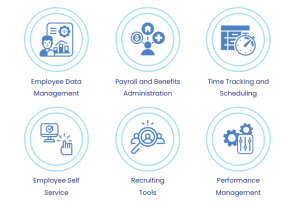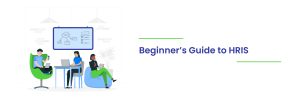Insights from Decades of Experience and Over 1000 Customer Interactions
For over two decades, PayrollPlus has been providing comprehensive and integrated HR solutions trusted by more than 1,600 companies worldwide. These organizations have specifically chosen PayrollPlus for its capability to handle complex HR processes-essential for their growing businesses. A significant number of these companies are based in Asia, with an average of 250 or more employees, several are up to thousands. However, PayrollPlus is also serving growing businesses with fewer than a hundred employee numbers. Having been in Human Resources for more than two decades, it’s evident that HR demands have grown significantly in recent years. Here are some reasons why HR processes have become increasingly complex: www.hrmspro.ph In the following pages, we will explore the factors that contribute to complex HR processes, identify industries with the most intricate needs, highlight essential software features to highlight these processes, and guide you in selecting the right software solution.
The data is collected based on our customer interactions
HR Processes Are Becoming
Increasingly Complex
Having been in Human Resources for more than two decades, it’s evident that HR demands have grown significantly in recent years. Here are some reasons why HR processes have become increasingly complex:
1. Expanded Responsibilities:
HR professionals are now expected to have deep expertise across a wide range of areas, including strategic planning, analytics, and compliance management. This increased scope makes it ever more challenging to maintain efficient and streamlined processes.
2. New HR Roles:
Organizations are increasingly relying on HR teams to drive initiatives around employee engagement, talent management, and workplace culture. These responsibilities add complexity on top of traditional functions like recruitment and benefits administration.
3. Changing Work Models:
The shift to flexible and hybrid work models has further complicated HR processes. HR teams must adopt policies to support a distributed workforce effectively.
4. Legacy Systems:
Reliance on outdated, manual, or siloed HR systems can lead to inefficiencies and errors, compounding the inherent complexity of HR work.
5. Standardization Challenges:
Attempts to over-standardize HR processes often in fact, increase complexity, failing to account for the unique needs and variability of the workforce.
Industries with Complex HR Needs
- Manufacturing: Challenges include workforce shortages, an aging workforce, and the need for extensive training programs.
- Healthcare: Complex compliance, taxation, and scheduling needs are prominent.
- Construction and Engineering: Challenges in tracking attendance, schedules, and ensuring compliance.
- Financial Services: Complex taxation, payroll, and benefits management needs.
- Professional and Business Services: Need for HR solutions to reduce errors, processing time, and risk.
- Retail & F&B: Employee scheduling, attendance tracking, and compliance challenges.
- Hospitality: Complexities in managing schedules and compliance with safety regulations.
Key Features to Look for in HR Software for Complex Businesses
Considering these complexities, our customers have shared that certain features are non-negotiables and necessary for managing complex HR processes. The features highlighted here are in addition to the basic and some more advanced HR software features that are more common, as highlighted below
Now let’s go through the additional features for more complex processes:
- Robust Compliance Management: Features should ensure compliance with the local labor regulations and include automated alerts and reporting. The solution should support multi-country labor regulations in the locations where the company operates.
- Advanced Analytics and Reporting: Customizable dashboards and real-time reporting to support strategic HR decisions.
- Payroll Integration: Ensures accurate data transfer and streamlines core processes.
- Succession Planning: Helps identify and develop future leaders.
- Compensation Management: Includes comprehensive planning tools, reporting, and budgeting capabilities.
- Customizationand Configurability: Highly customizable to fit unique needs, including custom fields and reports.
- Core HR Functionality: A centralized employee database and role-based security are essential.
- Integration Capability: Choosing a fully integrated system from the start can scale with your business, reduce errors like data duplication and security breaches, and maintain accurate records. With digital transformations accelerating, as noted by a McKinsey study during the pandemic, the ability to integrate systems for better oversight and strategy is indispensable.
Choosing the Right HR Software
- Evaluate Your Needs: Assess existing tools and identify must-have features, considering your unique HR requirements and future growth.
- Scalability: Ensure the HR software can scale with your company’s growth and evolution. The vendor should provide agile solutions that can expand in functionality and user capacity as your business requirements evolve.
- Long-termRoadmap: Check that the vendor has a clear and committed roadmap for future developments. This demonstrates their dedication to continuous improvement and adaptability to changing HR trends and technologies.
- Customer Support: The cloud makes life for HR professionals much easier, but it calls for closer collaboration with your software providers and building that relationship will be key with any subscription. During initial conversations, assess the quality of the service you receive and think about whether you would be happy to work with these teams long-term. Find out exactly what software support is available and what’s generally included in a service-level agreement. This ensures you can access the customer care you need when setting up and using a new system.
- Research Vendors: Evaluate offerings based on features, user experience, security, integration, pricing, and support.
- Proven Track Record: Choose a vendor with many satisfied customers and excellent user ratings. Positive testimonials and case studies are strong indicators of reliability and quality.
- Make a Shortlist: Choose the best options that meet your requirements and budget.
- Set a Clear Budget: Set a Clear Budget: Include all costs, such as implementation and migration, not just subscription fees.
- Involve Key Decision-Makers: Use demos and trials to ensure the selected software meets all your needs.
Conclusion
The ideal HR software integrates core functions like payroll and benefits while supporting advanced capabilities such as recruitment and performance management, enhancing your HR team’s productivity and effectiveness. The ability to grow with your company, adapt to its evolving needs, and have a reputation for high customer satisfaction are crucial for a long-term successful partnership.
Siloed systems, multiple data sources for employee information, and unlinked processes lead to inefficient operations and additional hours of work. PeoplesHR consolidates top-tier solutions, capabilities, and integrations into a single platform with a unified data
source. This platform enables:
- Efficient management of employee data & extraction of meaningful analytical insights.
- Recruitment, hiring, and onboarding of top-tier talent.
- Streamlining of payroll processes, time tracking, and benefits management.
- Evaluation of employee experiences and performance.
- Integration of extra tools via pre-built connections.
With continual monthly updates, PeoplesHR consistently enhances its solutions, making them more helpful, capable, comprehensive, and customizable. It is no wonder that PeoplesHR’s churn rate is very low and its ratings very high.




